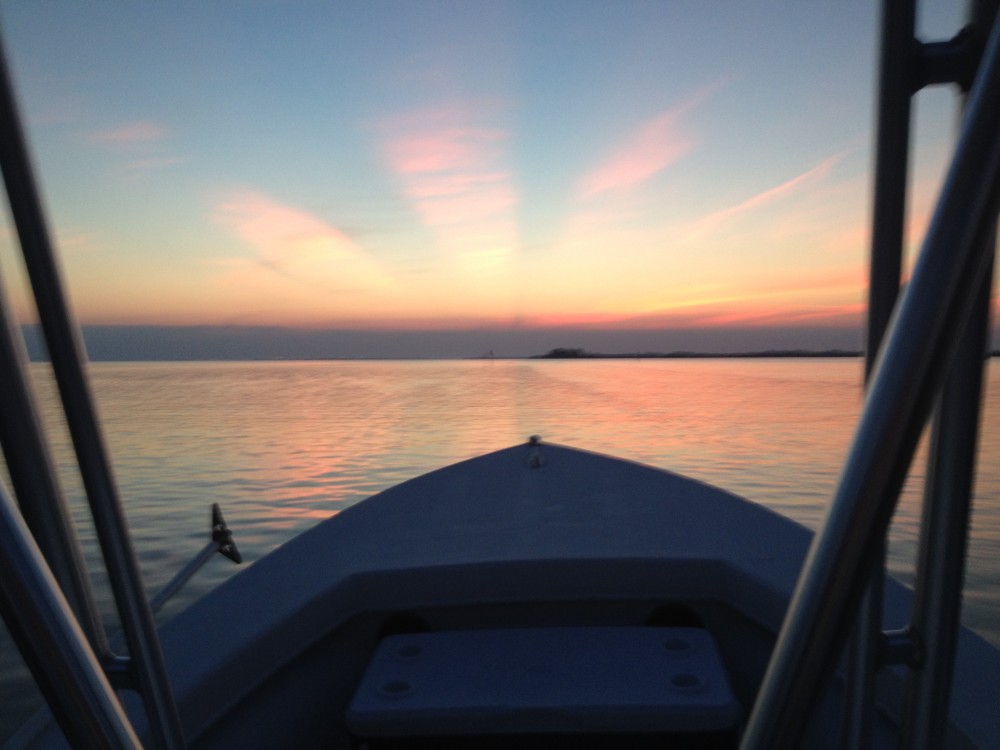Mangrove snapper — the ace in the hole
Mangrove snapper fishing is still going strong around inshore, nearshore and offshore structure.
On a recent morning, on a Just Reel charter with Steve Phelps, chef/owner of Indigenous restaurant in Sarasota, we experienced the bite firsthand.
We started around seven in the morning along the beaches of Anna Maria Island in search of bait. Luckily the winds were light and coming from the southeast, which made the Gulf waters calm and enabled us to pull right up to the shore during our search. We no sooner got close and could see the shiners flicking on the surface.
With the drop of the anchor and a couple of handfuls of chum thrown into the water, we had perfect-size bait all around the boat. A few throws of my 10-foot 1/4-inch mesh cast net supplied enough bait for our fishing trip. After a quick cleanup of the boat, we pulled anchor and started heading west.
Upon arrival of our first spot, a local reef, we dropped anchor and commenced to chumming. The live shiners I threw out behind the boat immediately attracted the attention of some large Spanish mackerel, this, in turn, brought some barracuda to the area which began circling the boat on patrol for the opportunity for some breakfast.
I then started chumming with fresh-caught dead shiners. While throwing handfuls of dead chum behind the transom, Phelps and I stood watching with anticipation as the chum slowly sank in the water column. Cigar minnows, skip jacks and more mackerel started feeding on the dead chum and then, down deeper, we could faintly see the fish we were looking for — mangrove snapper.
Phelps immediately grabbed a rod rigged with a 1/2-ounce knocker rig and circle hook and baited up with a medium sized live shiner. He opened the bail and let the bait sink to the bottom and instantly got railed and broken off. Seeing this occur, I dropped a bait down and hooked into and landed a nice 14-inch mango. Phelps re-rigged and re-baited and for the next 30 minutes, we caught keeper mangs on every drop. By 8:30 in the morning we had limited out and were wondering what to do next.
I know there had been some cobia around so we pulled anchor and went on the hunt. Catching cobia can be a random event. You never know when one or more will pop up or be sighted. I steered the boat toward a shallow wreck I know of to see if we could find anything there.
Upon arrival to the wreck, we scanned the area to see if we could spot any cobia. I didn’t see any, but Phelps thought he had seen something large on the sandy bottom around the wreck, so I dropped anchor and we started fishing. After 15 minutes or so of chumming heavily and catching nothing, our opportunity at one arose. The fish came up from the wreck chasing one of our chummers. I saw it first and instructed Phelps to put a bait on it.
Phelps immediately reeled up his bait from the wreck and positioned it directly in front of the cobia. And just like that he was on. The drag screamed out of the reel as the fish tried to head back into the wreck. Phelps kept the rig high with good pressure on the fish and managed to turn it so it was coming toward the boat. After another couple of hard turns, the cobia managed to pull the hook out — something they are notorious at doing.
Although disappointed we hadn’t landed the cobia, it was still reassuring to know we had two limits of some respectably sized mangrove snapper in the cooler. By this time it was time to head in so we leisurely made our way back to the Mainsail Marina where we stood and filleted snapper and talked about the one that got away.

